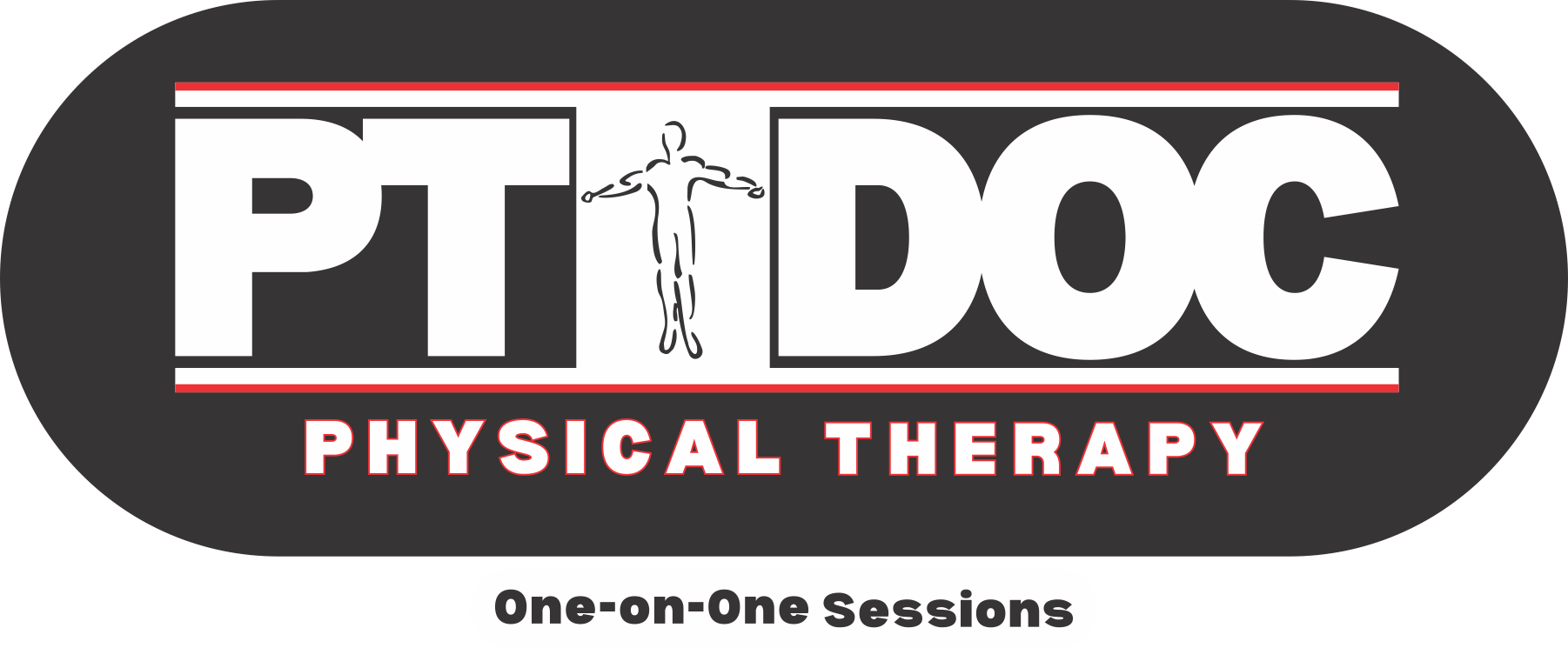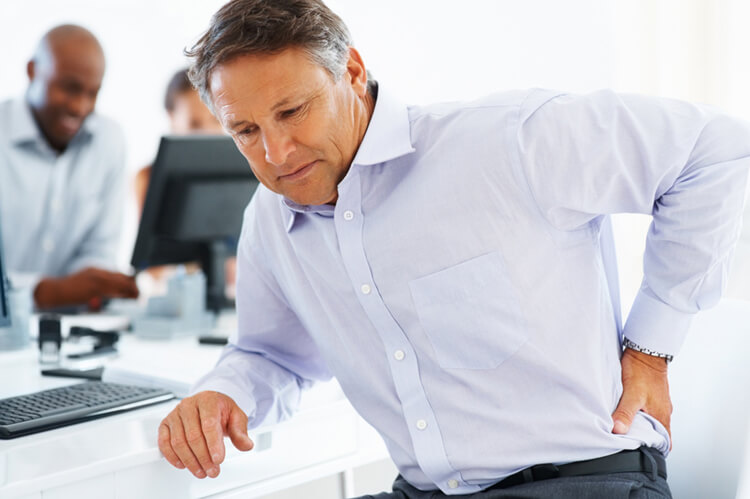
BACK PAIN
Effective Physical Therapy Treatments for Back Pain: Find Your Path to Recovery
Back pain is a complex and multifaceted issue, often impacting daily activities and overall well-being. Understanding the specific cause of your back pain is crucial in selecting the right treatment. Three common causes include spinal stenosis, herniated discs, and sacroiliac (SI) joint or pelvic problems, each requiring a unique approach for successful recovery.
Spinal Stenosis: Targeted Flexibility and Strengthening
For spinal stenosis, where the spinal canal narrows and compresses the nerves, physical therapy emphasizes improving flexibility and strength. Treatment includes stretching exercises to enhance spinal mobility and specific workouts to fortify back and abdominal muscles, crucial for spinal support.
Herniated Disc: Specialized Exercises to Allow Healing
A herniated disc can cause significant discomfort by irritating nearby nerves. Here, physical therapy focuses on tailored exercises to alleviate nerve pressure and manual therapy techniques to gradually reduce pain. The objective is to restore normal movement and reduce symptoms associated with the displaced disc.
SI Joint Problems: Precise Evaluation and Focused Therapy
Unlike other back issues, SI joint problems often don’t show up on X-rays and MRIs. It is the most common and most misdiagnosed as being the underlying cause of the other two back pain problems. They require a physical therapist’s expert evaluation in the office. Treatment for SI joint and related pelvic problems includes exercises to stabilize and strengthen the pelvic region and techniques to improve joint function. Since these issues are diagnosed through specific physical assessments, personalized therapy is key to managing pain effectively.
Understanding the root cause of your back pain is essential for a successful recovery. With the right treatment approach, tailored to your specific condition, physical therapy can provide significant relief and improve your quality of life. Contact our professional team to learn which treatment is right for you.
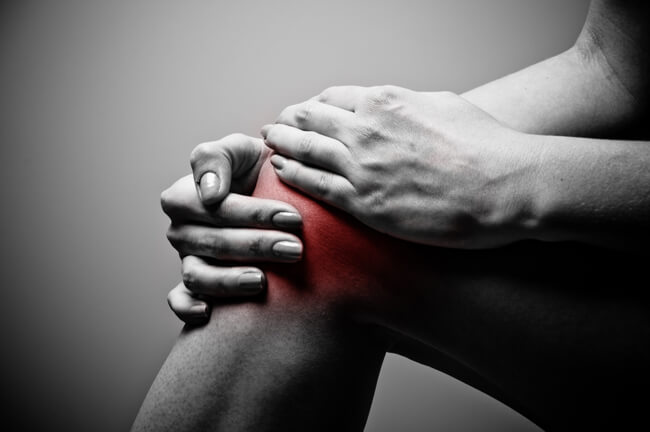
Top 3 Causes of Knee Pain
Arthritis
Meniscus Tears
Patellofemoral Dysfunction
WHAT IS A MENISCUS?
It is cartilage inside the knee that allows a cushion for the joint during walking and balancing activities. Also, the meniscus allows the knee to straighten and bend smoothly.
MENISCAL TEARS ARE MORE COMMON THAN YOU THINK!
In a recent study 63% of the people WITH knee pain had a meniscal damage while 60% of the people WITHOUT knee pain also had meniscal damage.
WHAT IS ARTHRITIS?
Arthritis Means “Joint Inflammation”
Common complaints of Arthritis in the Knee:
- Pain with walking
- Pain with getting out of chair
- Pain going up and down stairs.
Arthritis is a common cause of knee pain. Avoid letting arthritis win the battle with everyday activities by performing these simple exercises to strengthen the thigh muscles (quadriceps) and improve the flexibility of the hamstring. This will reduce the force through the knee joint and allow you to participate in daily activities with less pain!
Register today for a workshop!
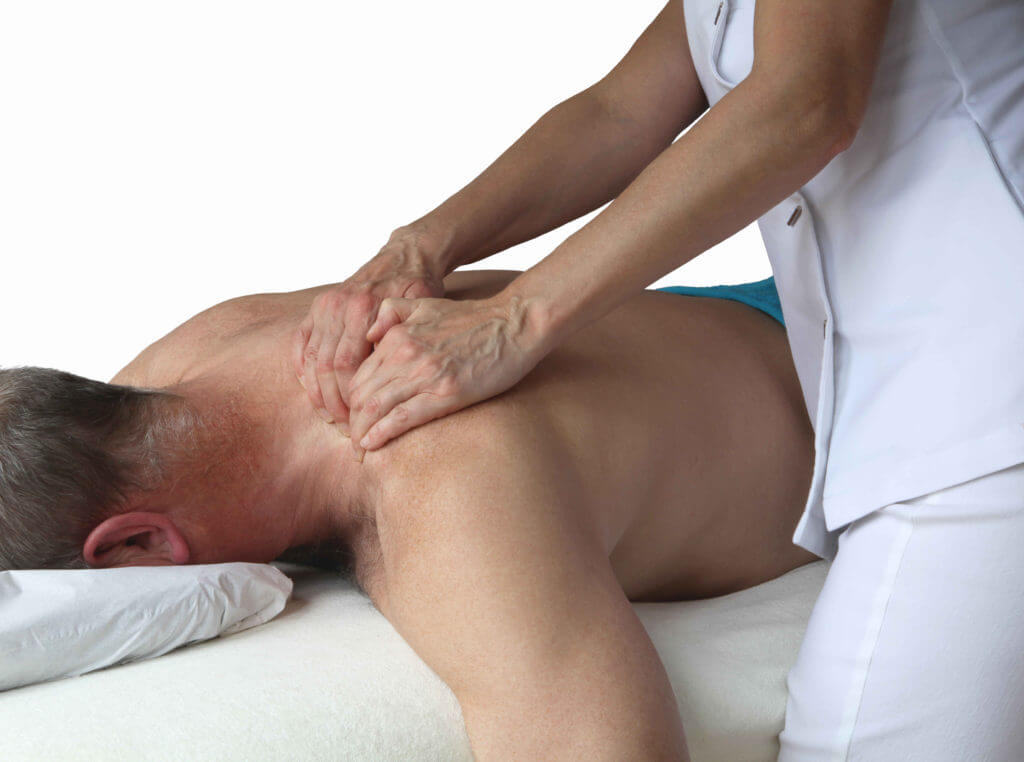
Top 3 Causes of Shoulder Pain
Rotator Cuff
Tendonitis
Impingement
Is there hope?
Successful treatment for rotator cuff impingment and tendonitis involves a hands-on approach followed by specific exercises performed properly. The result of successful treatment is less pain, less inflammation, better motion, improved strength and prevention of the pain returning.
Do you sleep like this or on your stomach with arms overhead? You may want to change your arm position if you are getting shoulder pain. This position puts pressure on the rotator cuff!
WHAT IS A ROTATOR CUFF?
The rotator cuff is a group of 4 muscles in the shoulder. They connect to your shoulder blade and arm bone (humerus).
The muscles are important to help you reach overhead, lift, get dressed and reach behind your back.
The rotator cuff tendons often become pinched as they pass under the end of the collar bone. This may result in calcium deposits or bone spurs and eventual tearing of the tendon.
Register for our workshop class here!
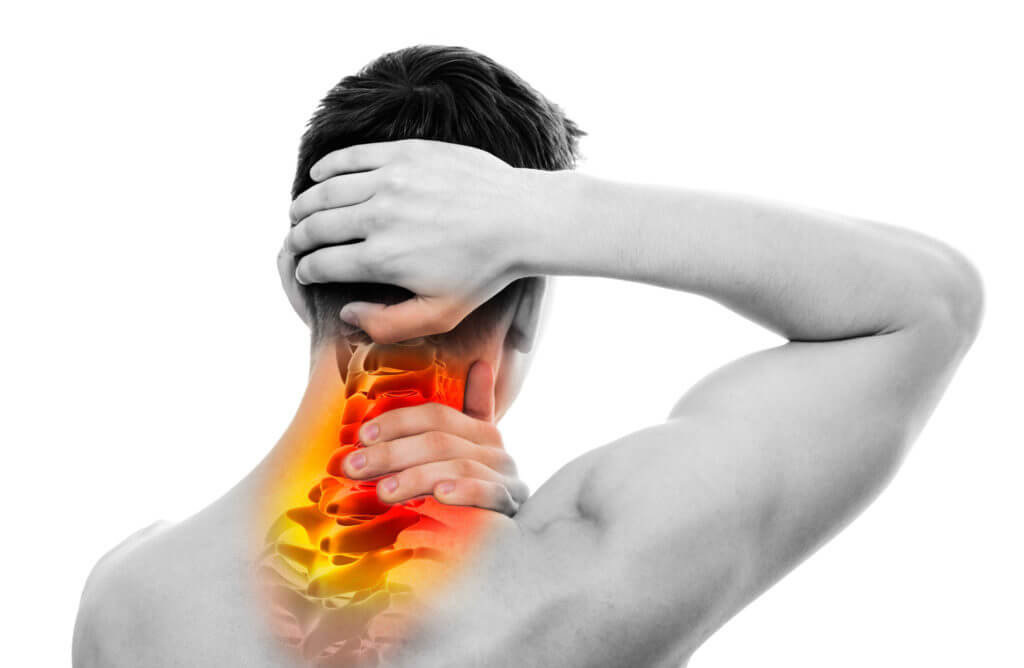
Top 4 Causes of Neck Pain
Degenerative Disc Disease
Headaches
Muscle Strain
Herniated Discs
POOR POSTURE
With the head forward and shoulders rounded, you are putting unwanted stress on muscles, ligaments, and bones that are not built to withstand these forces. This is a main cause of neck pain or headaches. In addition these structures can break down quicker and cause long-term problems.
GOOD POSTURE
With above posture (back straight, head above shoulders, shoulders pinching back, and arms at 90 degrees) the forces are reset to the natural positions of your muscles, bones, and ligaments.
WHAT DOES IT LOOK LIKE?
With age and injuries, the space between the bones in our neck decreases. This is one of the reasons we shrink or get shorter in height. With the decreased space, nerves in the neck may become pinched causing pain around the shoulder blade (scapula) or down the arms.
With a healthy spine, the space between the bones in the neck (called vertebrae) is larger than those with arthritis and degenerative disc disease.
Register for our workshop class here!
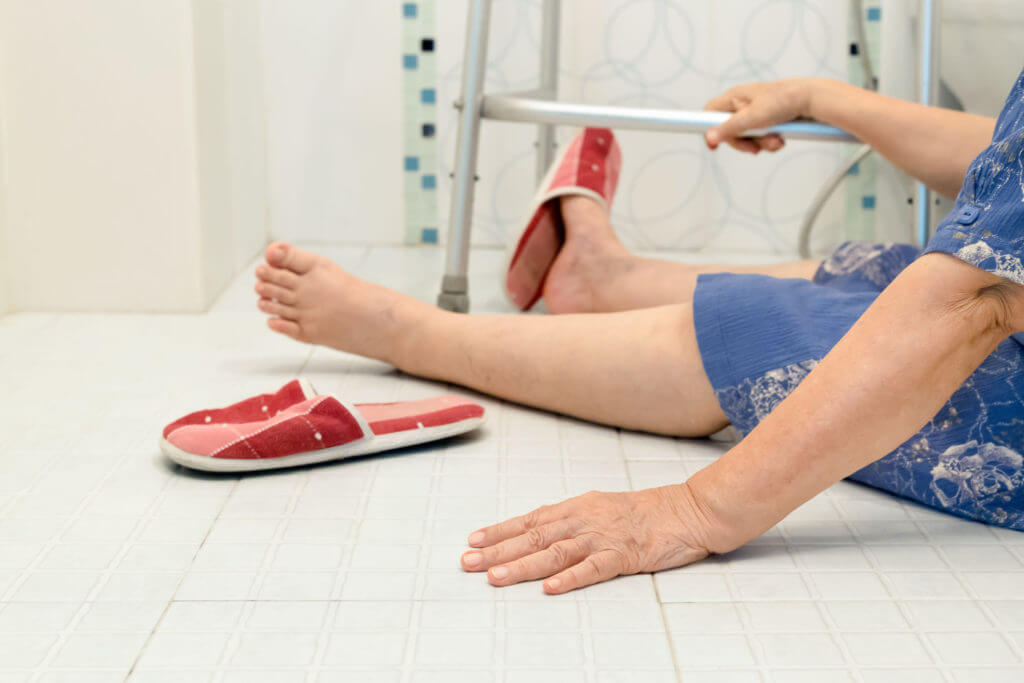
COMMON CAUSES OF FALLING
POOR COORDINATION
STRENGTH DEFICITS
LIMITED NECK MOTION
INNER EAR CRYSTALS
EPIDEMIC PROBLEM
Falling and poor balance can completely ruin your life or even end your life…I’ve seen it many times…
√ It is the leading cause of traumatic death in people over 65 years old…
√ Every third American over 65 falls each year…
√ It can cause you to break a bone, have surgery and be bedbound…
WHY DON’T I FEEL STEADY?
We gradually loose strength in our 30’s if we are not exercising properly. Lack of strength causes us to not move our limbs and body
well, making us not feel sure on our feet.
In addition, neck mobility and eye-to-body coordination also diminish over time, which further puts us at risk of falling.
WHAT IS VERTIGO?
Sometimes small crystals within the fluid deep in our inner ear become out of place and send false information to our brain that make us feel dizzy.
(This is different than having water in the ear after you swim.)
FIGHT BACK!
Fight back to avoid being another number added to this growing epidemic by improving strength, neck motion, coordination and inner ear
crystal positioning, which are all areas that we can safely help you improve.
Register today for our workshop!
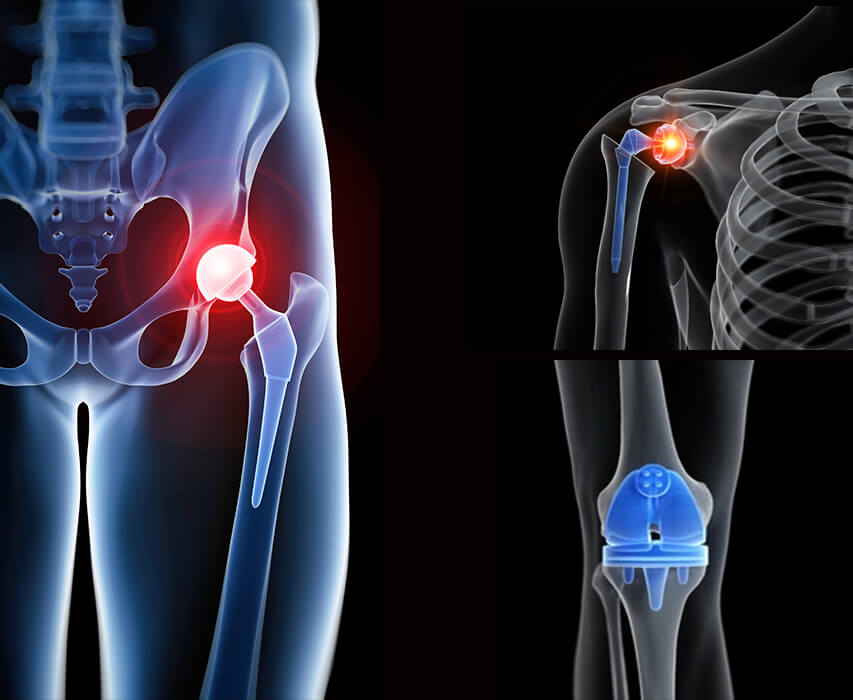
Joint Replacement Rehab
Physical therapy at PT DOC Physical Therapy for hip, knee, and shoulder replacements is crucial for recovery, focusing on personalized care to enhance strength, mobility, and joint functionality.
Cutting-Edge Techniques & Exercise Guidance
The therapy starts with managing post-surgery pain, swelling, and mobility limitations through exercises, manual therapy, and education. Programs are tailored to individual needs, evolving from basic movements to more complex exercises for joint mobility and muscle strength.
At PT DOC, therapy programs are customized, considering each patient’s unique recovery goals. Modalities like Light Laser Therapy and Functional Training support a well-rounded recovery, and therapists provide practical techniques for daily life integration.
One-on-One Sessions
Your anxieties post-surgery can be reduced from the first visit because all of our sessions are 100% One-on-One with the physical therapist. No aides or trainers involved! Feel confident that you are being helped by the most educated rehab professionals that will be guiding you each step of the way.
As you begin your journey with us you will soon realize we have helped hundreds of people through a process to full recovery and that we can do the same for you! Our goal is to help you reduce and eliminate the use of pain medications and get you back to your life activities as quickly as possible.
A Fun Environment
You will have a lot of support here at our clinic as you go through your rehabilitation. We know that exercise in general might not be everyone’s cup-of-tea and especially after surgery, so we have an energetic and motivated staff that will make it easier for you. We have clear and simple home exercise cards with instructions for you to follow. We take our time teaching and reteaching each part of your exercises so that you feel confident that you are doing them correctly. We even have music from every era that is guaranteed to make you feel comfortable, inspired and can help the treatment time go more smoothly.
For more information or to set up an appointment please contact us.
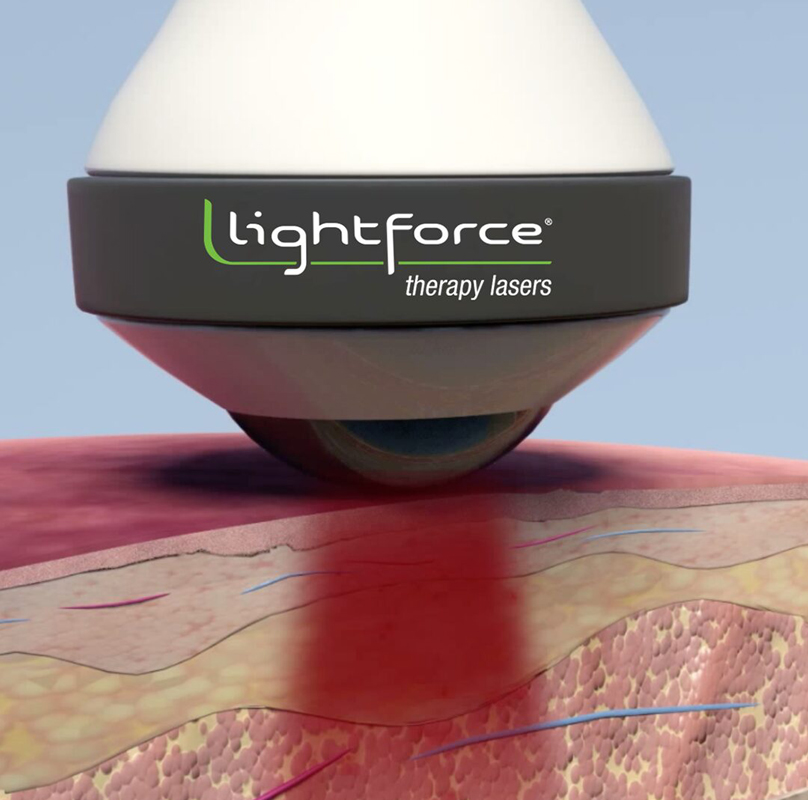
Arthritis – Laser Therapy
Osteoarthritis (OA) is a debilitating joint condition that affects more than 27 million individuals in the United States.1 According to the Centers for Disease Control and Prevention (CDC), 80% of patients with OA have some limitation of mobility, while 25% are unable to perform the activities of daily living (ADLs)2. Osteoarthritis is thought of as “wear and tear” arthritis and is caused by prolonged, abnormal stress on joints that leads to the breakdown of cartilage on joint surfaces. This is often associated with increased pain while performing daily activities.
In addition to actively addressing fitness levels, deep tissue laser therapy offers an effective passive treatment option that can help reduce arthritic pain. The pain and inflammation that occur in the majority of the body’s joints is created by inflammation of the tissue lining the joint capsule. Therapeutic laser can impact this tissue by improving the microcirculation in the tissue and impacting several anti-inflammatory mediators in the joint. Pain is normally reduced when these changes take place.
In addition to the metabolic effects laser has on inflamed tissue, it also provides a soothing warmth during treatment which also helps the body relax. Individuals will often feel a significant improvement from the first session. While each case is unique, typical treatment protocols call for 6-10 sessions for optimal results, and treatments are often short (about 5-10 minutes in length).
You can take back control of your life from the pain and discomfort of arthritis. Empower yourself to feel good again with movement, stretching, and laser therapy. While the idea of stretching and strengthening isn’t groundbreaking, combined with the unique capabilities of deep tissue laser therapy, it might just be your ticket to lasting relief.
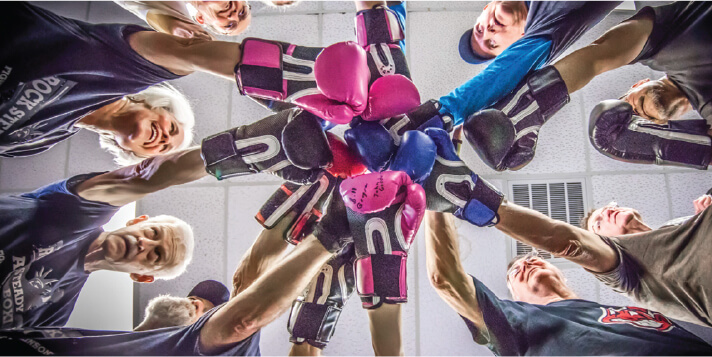

ABOUT ROCK STEADY BOXING QUEENS, NY
We are learning every day that there are ways in which people with Parkinson’s disease can enhance their daily quality of life and even build impressive power, strength, flexibility and speed! By exercising with coaches who know the ropes, you can fight your way out of the corner and start to feel and function better. Boxing works by moving your body in all planes of motion while continuously changing the routine as you progress through the workout. These classes have proven that anyone, at any level of Parkinson’s, can actually lessen their symptoms and lead a healthier/happier life.
One-on-One and Small Group Classes
We run all Boxing One-on-One sessions here at the PT DOC Physical Therapy clinic in Bayside, Queens, NY. We are located in the Bay Terrace Shopping Center where we have plenty of parking. Sessions are conducted by Doctors of Physical Therapy & Occupational Therapy all certified and trained in the Rock Steady Boxing techniques.
Covered by Medical Insurance in Our Clinic
The Rock Steady Boxing sessions are covered by medical insurance here at our clinic because we are a rehabilitation facility. Call us for an appointment today and join the fight!
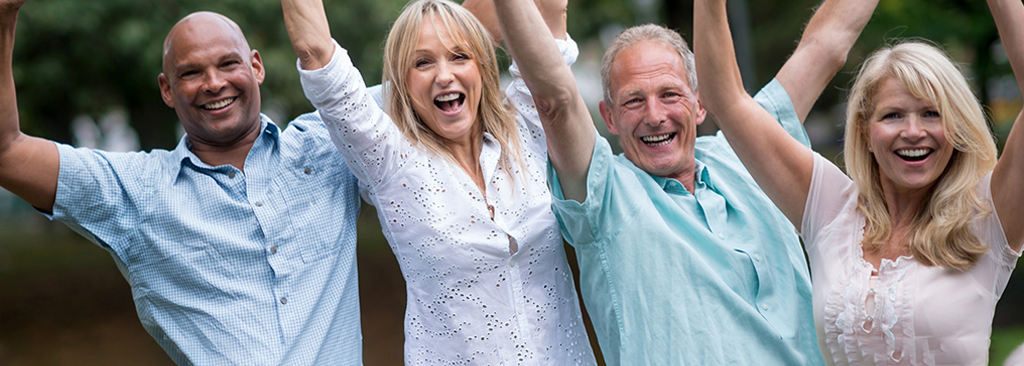

LSVT BIG®: Physical Therapy for Parkinson’s Disease and Similar Conditions
Learn about LSVT BIG, who it helps, and how it differs from other physical/occupational therapies.
LSVT BIG trains people with Parkinson disease (PD) to use their body more normally. People living with PD or other neurological conditions often move differently, with gestures and actions that become smaller and slower. They may have trouble with getting around, getting dressed and with other activities of daily living. LSVT BIG effectively trains improved movements for any activity, whether “small motor” tasks like buttoning a shirt or “large motor” tasks like getting up from sofa or chair or maintaining balance while walking. The treatment improves walking, self-care and other tasks by helping people “recalibrate” how they perceive their movements with what others actually see. It also teaches them how and when to apply extra effort to produce bigger motions – more like the movements of everyone around them.
Because LSVT BIG treatment is customized to each person’s specific needs and goals, it can help regardless of the stage or severity of your condition. That said, the treatment may be most effective in early or middle stages of your condition, when you can both improve function and potentially slow further symptom progression. Beginning your work with LSVT BIG before you’ve noticed significant problems with balance, mobility or posture will often lead to the best results, but it’s never too late to start. LSVT BIG can produce significant improvements even for people facing considerable physical difficulties.
View a few examples of LSVT BIG Exercises from the LSVT BIG Homework Helper Video.
Go on a journey with Anders as he documents his experience with LSVT BIG.

Build Strong Bones with The bioDensity System
Do you have osteoporosis or osteopenia?
Are you afraid of falling and breaking a bone?
Are you doing enough to strengthen your bones if you were to fall? If you answered
“NO,” then you are not alone. Many people are not doing enough.
We recognize that many people are undershooting when it comes to strengthening
their bones for the main fact that traditional weight and rubber band exercises will irritate joints, ligaments and tendons and cause injuries if they are done with the amount of resistance needed to build stronger bones.
To build stronger bones you need approximately 1 to 4 times your body. That’s a lot of weight! The only way to do that safely if through an isometric contraction, or “no movement contraction”.
The bioDensity machine allows for this magnitude of resistance and it will record your progress and actually show you if you have put enough load onto your bones in order to strengthen them.
Yes you could do heavy lifting or jumping but that would increase your risk of injury. The bioDensity is a safe and controlled approach offering the benefits of high impact activity without the risk.
Studies have shown that once-weekly, bioDensity sessions can improve bone density to combat osteoporosis and osteopenia, as well as improving lipids and blood sugar (A1C) measurements in type 2 diabetics. Your initial bioDensity session will take approximately 15-20 minutes to complete. The session can be completed in street clothes (flat soled shoes are recommended). Subsequent sessions are typically shorter in duration.
4 Bone Exercises
There are four main exercises in using this machine. When completing the four movements in bioDensity you will be required to produce maximal force for 5 seconds. The force would be similar in nature to pushing or lifting an object of significant weight and size in four different directions: (1) forward using your hands; (2) forward using your feet; (3) upward using your knees and (4) upward using your arms and legs together.
After completing a bioDensity session you may feel like you’ve completed physical work. You will feel warm from increased blood circulation and from work completed by the muscles. Within 24 hours you may feel muscular fatigue, but you are not likely to feel soreness. Since the movements only require five (5) seconds of maximal work, your body will not produce the by-products which cause muscle soreness. Users often comment on their improved mood and confidence as a result of their documented success.
Again, this machine allows you to apply greater force to your muscles and bones in a safe manner that is not easily achieved with exercise bands or free weights.
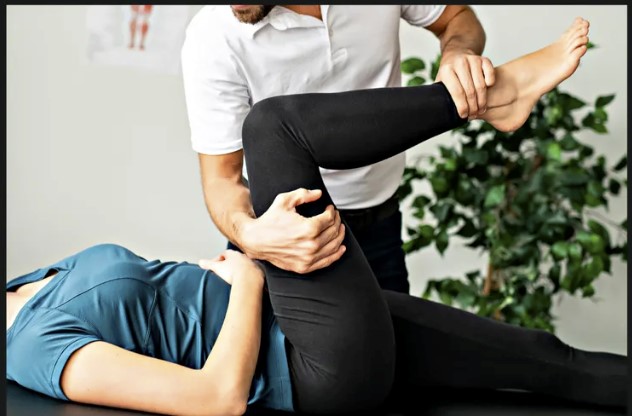
Assisted Stretching
This program is directed to help athletes of all ages who want to “Stay in the Game”. It helps the young athlete that wants to prevent injuries and improve flexibility, which will allow them to have greater, more usable movement during their sport activities, or the weekend athlete that wants to continue to exercise without injury and to improve performance. It also helps to improve posture and reduce muscle and joint pain.
Sometimes we just don’t know exactly how to stretch and often we stop too soon because it is uncomfortable. Sometimes we push too hard and we regret that too!
Get Stretched by the Doctors
Getting stretched by the “professionals” that have Doctorates in Physical Therapy and are using stretching 365 days a year to help their patients achieve better movement is the most secure way to achieve your goals without getting sidelined.
A huge benefit of getting stretched by a Doctor of Physical Therapy is that we know the “pit falls” that can cause a future injury because we see them every day, therefore we know just how much to push you and when to recommend other types of assistance to help you reach your goals.
Basically, we can see your problem areas before they become a problem. We can also stretch those “hard-to-reach” areas that are difficult for a person to do on their own.
Come to the PT DOC Physical Therapy pros and allow us to make sure you reach your goals with the most educated and experienced movement specialists around.
It Helps…
- Increase flexibility
- Shorten recovery time
- Increase range of motion
- Improve athletic performance
- Reduce muscle & joint pains
- Improve posture
- Reduce stress
Insurance is accepted if you have an ailment. We do accept Medicare insurance without a prescription for one month, however, most private insurances will require a prescription up front.
Don’t wait. Contact us for an appointment today and feel the difference with the PT DOC Assisted Stretching program!
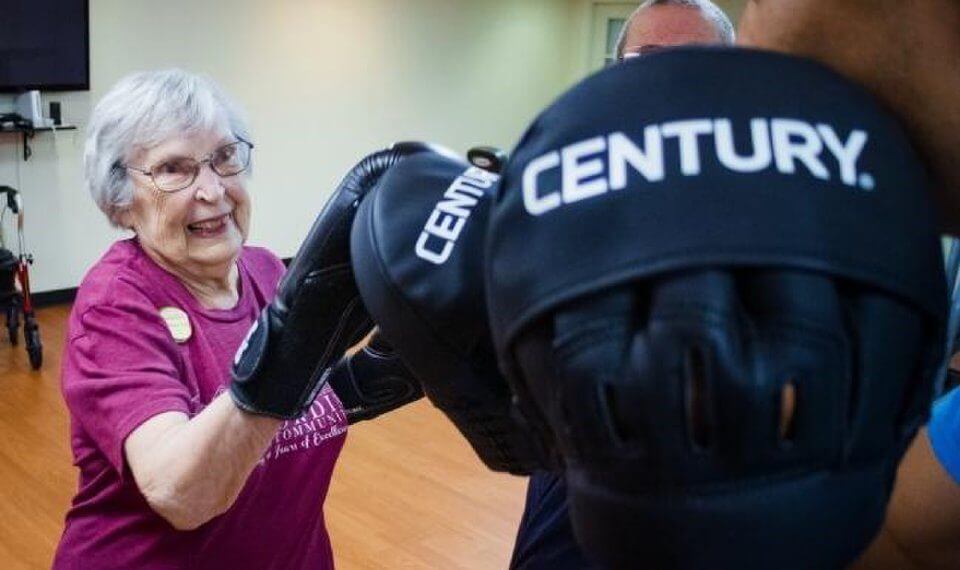
Boxing For Balance
Our NEW “Boxing for Balance” Program was created to help people feel more steady on their feet. It involves many strength, coordination and balance movements which will also have an additional benefit of improving endurance.
It has been a huge hit! Our balance patients love the “Boxing for Balance” program and are able to feel much more steady walking in the community. This program is a must for anyone wanting to improve their balance and feel real changes when they walk and move.
One-on-One Sessions
All of our Boxing sessions are directly One-on-One with our Doctors of Physical Therapy. No aides! The sessions are performed here at the PT DOC Physical Therapy clinic in Bayside, Queens, NY in our boxing room.
We run all Boxing One-on-One sessions here at the PT DOC Physical Therapy clinic in Bayside, Queens, NY. We are located in the Bay Terrace Shopping Center where we have plenty of parking. Sessions are conducted by Doctors of Physical Therapy & Occupational Therapy all certified and trained in the Rock Steady Boxing techniques.
Covered by Medical Insurance in Our Clinic
All Boxing sessions are covered by medical insurance at our clinic because we are a rehabilitation facility. Call us for an appointment today and join the fight!
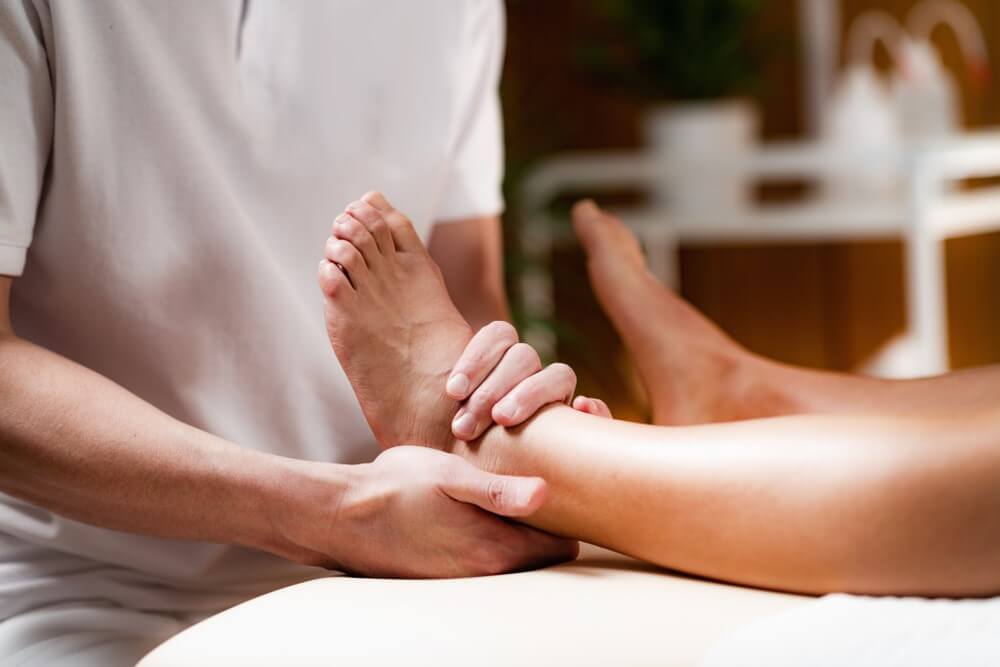
Foot & Ankle Pain
At our clinic, we understand the impact that foot and ankle discomfort can have on your daily life, hindering mobility and overall well-being. Our team of skilled physical therapists is dedicated to accurately diagnosing and effectively treating various foot and ankle conditions. We provide individualized, evidence-based care designed to help you overcome pain and regain full function.
3 Common Causes
- Plantar Fasciitis:This is often experienced as a stabbing pain in the heel, usually due to inflammation of the plantar fascia – the tissue connecting the heel bone to the toes.
- Achilles Tendinitis:Characterized by pain along the back of the leg near the heel, this condition typically arises from overuse, leading to inflammation of the Achilles tendon.
- Ankle Sprains:These occur when the ankle ligaments are stretched or torn, often during physical activities or due to an accidental twist or turn of the foot.
At the PT DOC Physical Therapy clinic, our approach goes beyond symptom relief. We aim to address the underlying cause of your pain. Our comprehensive treatment plans can include manual therapy, targeted strength and flexibility exercises, and patient education on proper foot and ankle care. We also utilize advanced therapeutic techniques such as Light Laser Therapy, ultrasound therapy, electrical stimulation, and orthotic recommendations to support your recovery. Our ultimate goal is to not only relieve your current discomfort but also provide you with the knowledge and tools to maintain healthy feet and ankles long-term. Let us guide you on your path to a pain-free and active lifestyle.
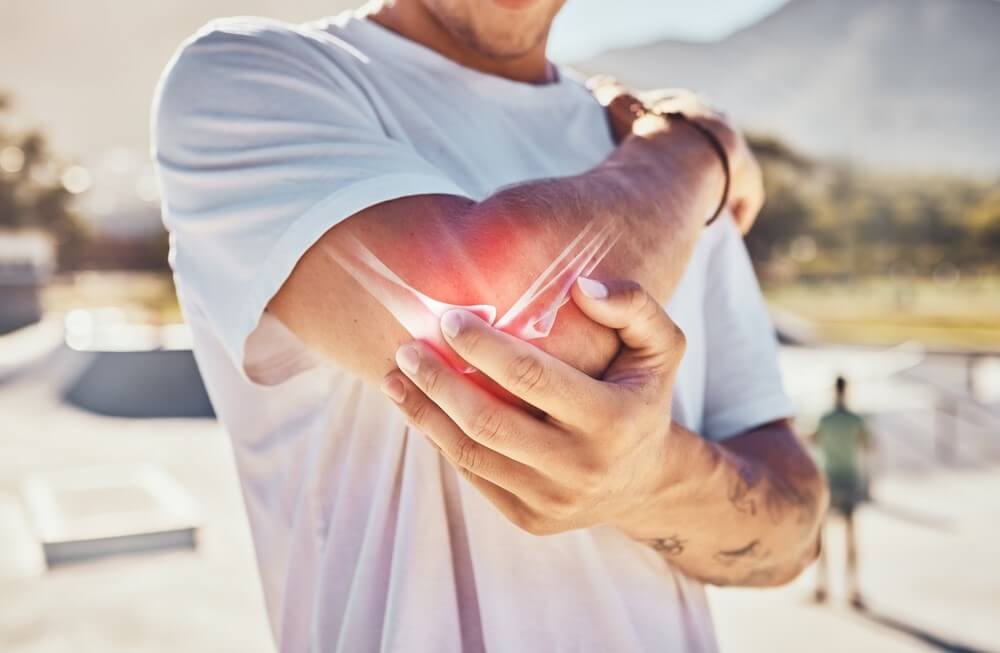
Elbow & Hand Pain
Understanding Elbow and Hand Pain: A Physical Therapy Perspective
Elbow and hand pain can significantly impact your daily activities, from typing on a computer to lifting a cup of coffee. At our physical therapy clinic, we specialize in diagnosing and treating these common yet often debilitating conditions. Pain in these areas usually stems from a variety of causes, each requiring a tailored approach for effective relief.
4 Common Causes of Elbow and Hand Pain
- Repetitive Strain Injuries (RSIs):Frequent, repetitive motions like typing or using hand tools can lead to RSIs, causing pain and stiffness in the elbow and hand.
- Arthritis: Both osteoarthritis and rheumatoid arthritis are common in the elbow and hand, leading to joint pain, swelling, and reduced mobility.
- Tendonitis:Overuse or strain can inflame tendons, particularly in the elbow (tennis elbow) and wrist (carpal tunnel syndrome).
- Sports Injuries: Activities like golf, tennis, or weightlifting can result in acute or chronic pain due to muscle or ligament strain, or joint inflammation.
At the PT DOC Physical Therapy, we use a combination of hands-on therapy, exercises, Light Laser Therapy and education to manage and alleviate your pain. Our goal is to restore your function and mobility, allowing you to return to your daily activities without discomfort. Contact us today to start your journey towards pain-free living.
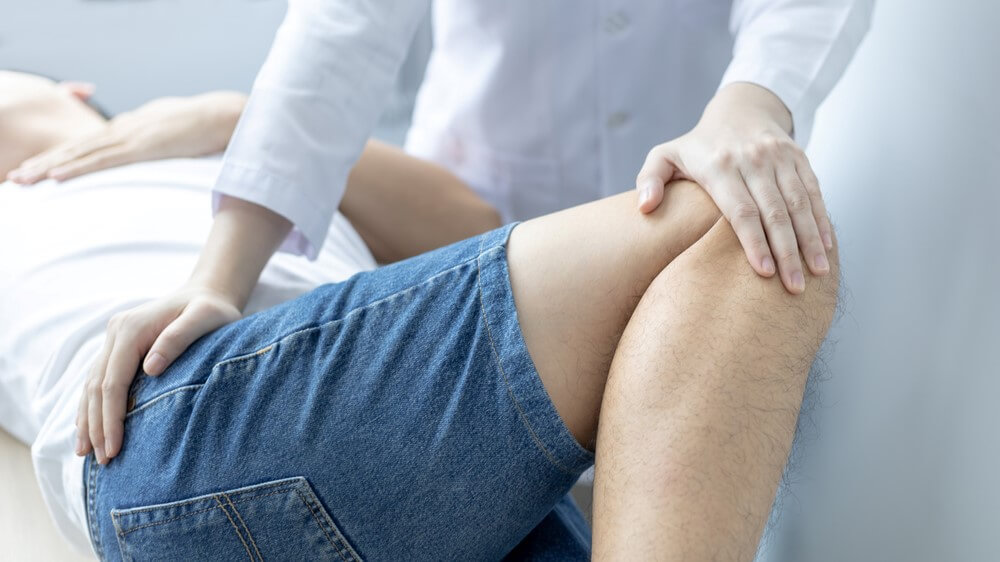
Hip Pain
3 Common Causes and Symptoms
Hip pain, a frequent complaint among adults, can significantly impact mobility and quality of life. The top three causes of hip pain are osteoarthritis, muscle strains, and bursitis. Osteoarthritis, a degenerative joint disease, leads to the breakdown of cartilage and can cause stiffness and joint pain. Muscle strains occur when hip muscles are overstretched or torn, leading to inflammation and discomfort. Bursitis, the inflammation of the bursae, causes sharp, shooting pain, especially with movement or pressure. Recognizing these symptoms is vital for timely and effective treatment.
Physical Therapy: A Path to Relief
Our physical therapy clinic offers specialized treatments targeting the unique causes of hip pain. Our approach includes exercises to strengthen the hip muscles and improve joint flexibility, effectively addressing the issues caused by osteoarthritis, muscle strains, and bursitis. We also utilize manual therapy techniques and Deep Tissue Laser Therapy to alleviate discomfort and enhance mobility.
Your Partner in Hip Health
We at the PT DOC Physical Therapy are committed to your journey towards a pain-free life. Our tailored treatment plans are designed to not only provide relief from current symptoms but also to prevent future hip issues. Under our expert care, you can expect a comprehensive recovery plan that brings you back to your desired level of activity and well-being.
